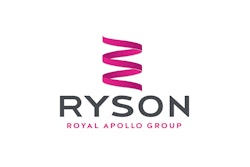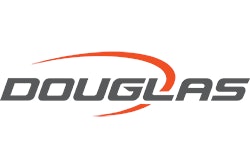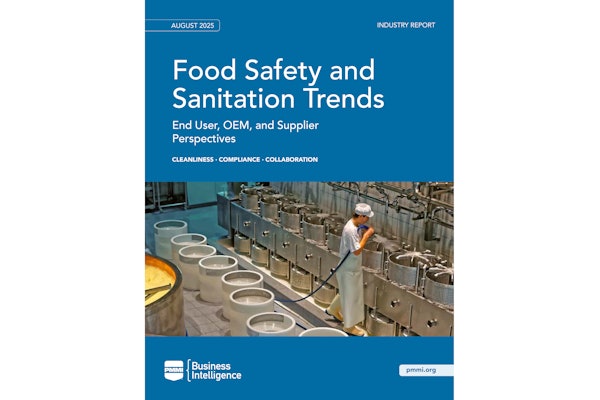Few companies in North America have been better at taking advantage of the growing popularity of bottled water than Canada’s Ice River Springs. Headquartered near a springwater source in Feversham, Ontario, nearly all of what the firm produces is in the private-label category. And since its customers include the likes of Walmart and Loblaw, we’re talking about a whole lot of bottles coming out of the firm’s seven plants, including several in the U.S.
The most impressive new line Ice River has installed is Line 8 at its sprawling Feversham headquarters facility. It’s dedicated to 500-mL bottles made in-house from 100% post-consumer recycled PET (for a look at Ice River’s ambitious, vertically integrated, and successful closed-loop bottle-to-bottle recycling operation, go to packworld.com/video-31156).
Line 8 is a blow/fill line that runs at 1,200 bottles/min. Preforms made in Feversham are stored in large bulk containers until cool and then taken to hoppers that feed two Krones stretch blow molders.
“We’ve looked at conveying them straight from injection molding and into the blow molders, but they do need to cool to ambient temp, which takes about 24 hours when they’re stored in the bulk containers,” says James Gott, project manager at Ice River. “If we sent preforms straight into the blow molders, we’d need at least 20 minutes of conveying time, and probably even some cooling or air conditioning would have to be involved in the process.”
One blow molder has 24 cavities and produces 800 bottles/min while the other has 12 cavities and does 400/min.
“These are our first Krones blow molders,” notes Gott. “We’ve always had good experience with their other equipment, primarily fillers and cappers, and we’d heard good things about their blow molders, so we wanted to try them.”
Bottles exit the blow molders on air conveyors that bring them to a Krones filler/capper/labeler block. Along the route is a drop bin. If anything goes wrong downstream to cause a backup, bottles drop into this bin until the backup issue is resolved. Bottles from the drop bin are then fed back into production through an unscrambler from Lanfranchi.
Bottles are single-filed just ahead of the Krones filler/capper/labeler block, which has 104 filling nozzles, 39 capping heads, and 36 labeling stations. Glue-applied paper labels are of the cut-and-stack variety.
Caps are sorted and fed by a machine from Aidlin. Like the preforms that are fed into the line, the polypropylene caps are injection-molded in-house. While Gott acknowledges the cost savings that accrue from this kind of vertical integration, he says there are other benefits to be gained, as well.
“We’ve been making our caps since 2008,” says Gott. “It gives us more freedom to experiment and push things forward, which is why we were about two years ahead of the bottled water industry in general when we introduced a short-skirted cap weighing just one gram instead of 1.8. Keep in mind, too, that when you change the cap configuration you also need to modify the neck finish on your preform, and here again we were able to do all of this much more quickly because we are so vertically integrated.”
Filled, capped, and labeled bottles pass through a Krones Checkmat vision system that checks for cocked caps, proper fill level, damaged labels, missing labels, or defects in bottles. Bottles that are defective in any way are kicked off the line. Laser date-coding by a Markem-Imaje system is followed by multipacking, but first is a large accumulation table. Should downstream equipment go down for any reason, blowing and filling can continue unabated and bottles can flow onto the accumulation table until the downstream problem has been resolved.”
Multipacking is done on a Model M-75 shrink-wrap system from Douglas Machine that has 15 axes of motion driven by Kinetix servo drives from Rockwell . Also from Rockwell is the ControLogix controller that governs the Douglas machine. Douglas’s Smartrak® infeed takes incoming bottles through a narrow choke section that is two thirds the width of the desired multipack pattern. Shortly after this choke section, the bottles enter a more open area where they are allowed to spread out freely, evenly, and with minimal back pressure. The Douglas Slipstream™ pinless metering system requires fewer change parts compared to a pin metering system. Metering belts advance the bottles into the metering area, a slip sheet creates the appropriate pack pattern gap, and metering bars stabilize tipsy bottles as they leave the metering section and enter the load area.
Ice River produces 12-, 18-, 24-, and 30-count bundles. Like the Krones blow molders, this is Ice River’s first experience with a Douglas shrink wrapper. According to Gott, it’s likely not the last.
“The operators love this machine,” says Gott. “It’s robust and fast, and if there is an issue that needs to be addressed, it’s easy to get at it and get it fixed. Not only does it run reliably, the heat tunnel is very accurate and consistent in shrinking the film so that it makes a strong pack. That’s why we’re able to do unsupported multipacks. No corrugated pad or tray is needed. Changeover is easy, too. Re-set of the infeed requires a few mechanical adjustments, but that’s easy. As for the spacing of the bottles, the controls system takes scare of that.”
An ink-jet system from Videojet prints date-code information on each multipack. The low back-pressure conveyors from Descon that take the multipacks away from the shrink wrapper are helpful, says Gott, because the gentle handling they provide ensures that the shrink film won’t be damaged or dislodged while it is still hardening after the heat of the shrink tunnel.
A Ryson spiral conveyor takes film-wrapped multipacks to an overhead conveyor leading to a high-level palletizer from Production Automation Inc.
“This palletizer is another first for us,” says Gott. “We wanted high speed and we’d heard good things about PAI in the industry. It’s proven to be a good machine.”
The last machine in the line is a stretch wrapper from Wulftec/M.J. Mallis. This machine, notes Gott, is anything but a first for Ice River Springs. “We’ve been using Wulftec pallet wrappers on our lines since we started the business,” says Gott.
Running commercially now since early 2009, Line 8 marks a sizeable improvement over the line it replaced, which was only capable of 500 bottles/min. Pleased though he is to have this increased production capacity, Gott marvels at the fact that in just two years, the technology showcased in Line 8 is practically passé.
“The 800 bottle-per-minute blow-molding system was state-of-the art when we bought it, but it’s been surpassed already by a new-generation machine from Krones that does 900 per minute,” says Gott. This being the case, he adds, he wonders if he should be interpack-bound when that triennial packaging machinery extravaganza opens May 12 in Dusseldorf, Germany.
































